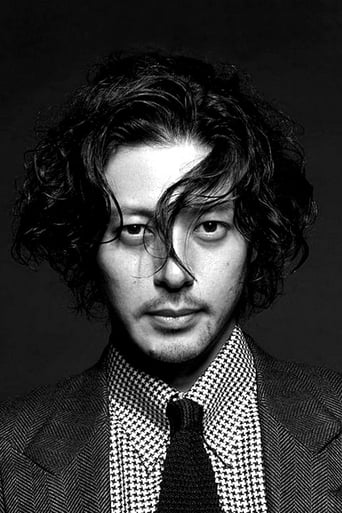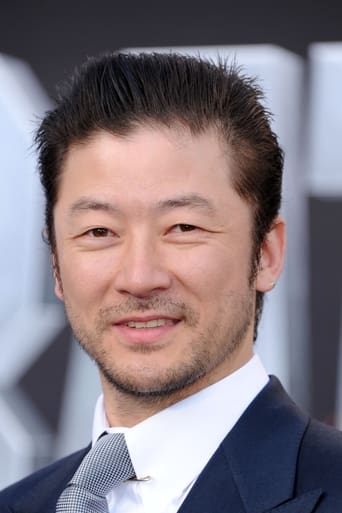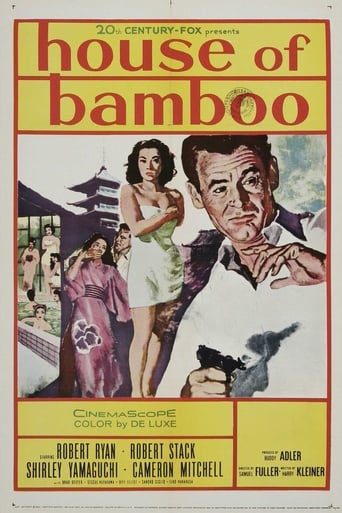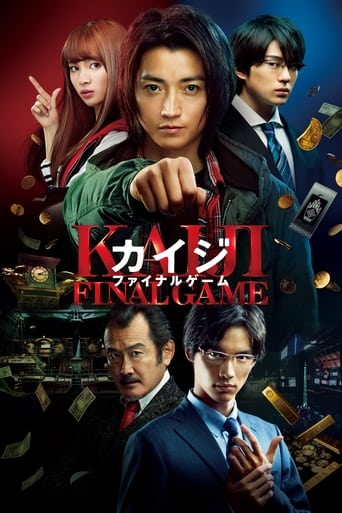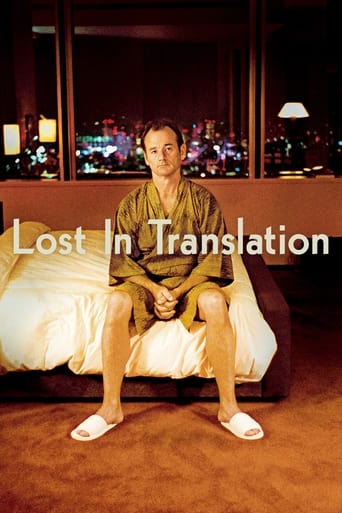
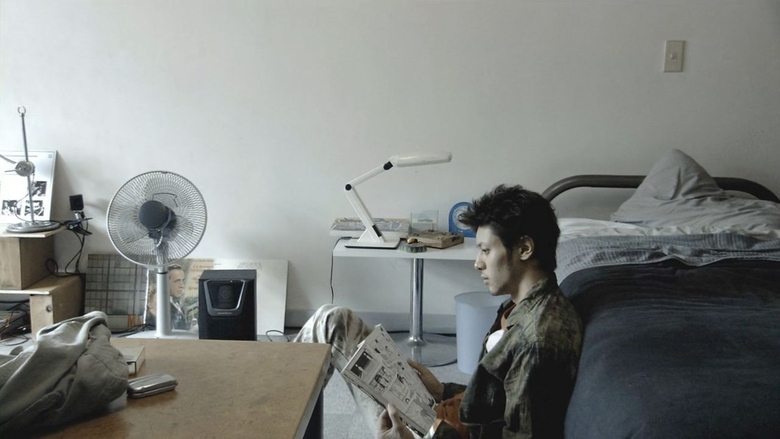
Bright Future (2003)
Two friends who work together at a Tokyo laundry are increasingly alienated from everyday life. They become fascinated with a deadly jellyfish.
Watch Trailer
Cast


Similar titles
Reviews
Whatever Kiyoshi Kurosawa is to the Japanese audience, for Americans he's distinctly an acquired taste. "Cure "struck me immediately however as haunting, creepy, and drably beautiful; it's just that one can't imagine a steady diet of such stuff. "Pulse", typically stylish and moody, is completely different (and too similar to the "Ringu" franchise), but the only other Kurosawa I've seen so far, "Bright Future," is something else again. Symbolic interpretations of the two aimless, dangerous boys as some kind of statement about Japan's youth seem simple-minded and naive, though surely the ironic title makes that possibility all too obvious. Anyway, the presence of young people both does and does not mean anything in Kurosawa's films. He works very loosely within genres that appeal to youth, but his approach is consistently indirect and enigmatic. What strikes me is the relationship between Nimura and Mamoru--roommates and buddies on the surface, but underneath slave and master, follower and sensei, or symbiotic zombie couple. Their lack of affect turns modern Japanese youth on its head because they're quietly terrifying and somehow also super cool, Nimura's ragged clothing a radical fashion statement and his wild hair and sculptured looks worthy of a fashion model.Mr Fujiwara is the ultimate bourgeois clueless work buddy jerk (he combines two or three different kinds of undesirable associate); but we don't usually kill them. Kurosawa films seem to usually go in the direction of some kind of muted apocalypse, but they proceed toward it casually, as if he didn't quite care where things were going.That's because the atmosphere and look of his films are the real subjects; like any great filmmaker he begins and ends with image and sound. Note the bland, cheerful music that pops up at the darnedest places. The relationship that develops between Nimura and Shin'ichirô, Mamoru's father after Mamoru is no more, and the scenes of Shin'ichirô's cluttered yet desolate workshop/dwelling recall Akira Kurosawa's Dodeskaden but also Italian neorealism and the clan of directionless but uniformed young bad boys who wander through the street in the long final tracking shot evokes Antonioni and the mute clowns in Blow-Up. Kiyoshi Kurosawa's framing, his use of empty urban long shots, is akin to the vision of Antonioni. If it's true that this cool stuff is all too appealing to film school dropouts ready to concoct a deep interpretation of every aimless sequence, it's also true that Kurosawa like no other living director creates his own haunting and disturbing moods, and it would be fun to compare this movie with Bong Joon-ho's boisterous "The Host."Really an 8.5 at least, for originality.
In Tokyo, the dysfunctional friends Nimura (Jô Odagiri) and Mamoru (Tadanobu Asano) work in a laundry of towels in part time. Nimura sees a bright future only in dreams, and Mamoru is adapting a venom jellyfish in fresh water. Their boss likes them and gives a bonus and proposes a full time work for them. Mamoru kills the boss's family in a attack of rage without any reason and he is sentenced to death. Nimura keeps the jellyfish and releases it in a canal of Tokyo. Meanwhile, Mamoru's father comes to Tokyo for the funeral of his son, and Nimura stays with him, while the jellyfishes threatens the population of Tokyo.I bought the American DVD "Bright Future" full of expectations of an intriguing movie, based on the recommendation on the cover to fans of David Lynch and Luis Buñuel. The person that wrote this remark must be kidding! It is ridiculous the comparison of this senseless, pretentious and boring mess with the films of these two great directors. Just because the story does not make any sense, it does not mean that we, fans of David Lynch and Luis Buñuel, will enjoy any crap. In the end, I have never reach the target where director Kyioshi Kurosawa aimed and I found this flick a pure waste of time and money. My vote is three.Title (Brazil): Not Available
Working at a large laundry cleaning service, Nimura Yuji spends most of his days sorting through clothing and transferring loads of clothing from washers to dryers. While this is not the most mentally stimulating or satisfying work, Nimura is at least accompanied by his best friend Arita Mamoru during his days of drudgery. While his life might be quite dull Nimura is able to escape his humdrum world by entering the realm of dreams where the future is bright. However, in the waking world Nimura seems to be a bit at a loss. He gets into fight over the smallest things such as the pieces of fried chicken in his lunch box were a bit small and it seems that without the guidance of Mamoru Yuji would not be able to survive.Content hanging out at Mamoru's apartment, where he likes to feed Mamoru's pet jellyfish, and listening to music, Nimura's isolated world is invaded when his boss, Mr. Fujiwara, begins to wedge his way into his life. It begins small. Mr. Fujiwara asks the two young men to help him move his daughter's new desk upstairs and asks them to stay afterwards for dinner, but soon he is asking the two young to become fulltime employees and offers them large bonuses. Not sure if they want to accept the bonuses and the fulltime employment, Mamoru and Nimura try to avoid Mr. Fujiwara, but the older man invites himself over to Mamoru's home where he makes himself at home by plopping in front of the TV. Nimura is quite upset at the intrusion, but it is Mamoru who upsets the boss by not warning him when he sticks his hand in the poisonous jellyfish's tank. When accused by his boss, Mamoru quits his job. Left alone at work, Nimura's hatred towards his boss grows until one night, gripping a steel pipe; he is determined to kill his boss. However, when he arrives at his boss's house he finds the bloody corpses of his boss and his boss's wife in their bedroom. Mamoru is soon arrested and put in prison. Although Nimura visits his friend in prison, he is soon left alone and the divide between his reality and his world of dreams soon begins to erode.Bright Future is the first film that I have watched by Kurosawa Kiyoshi. A quiet work, filled with light, whimsical music, Bright Future is a visual delight, especially when the red jellyfish are on screen. Odagiri Jo, Nimura, and Asano Tadanobu, Mamoru, both do excellent jobs of acting and one can truly feel how much Odagiri's character depends on Asano's. However, my favorite bit of acting within the film was performed by Fuji Tatsuya, the actor who starred in Oshima Nagisa's Realm of the Senses. There is one scene that is truly heartbreaking when Fuji's character is searching for Nimura's. A good film overall, but one I believe needs repeated viewing in order to figure out its multifaceted nuances.
Many viewers look at Bright Future and throw up their hands in confusion, even those who admire Kurosawa's style. I've thought a lot about this movie and I don't think its intentions are that obscure, though I confess it can be inaccessible. It's just that Kurosawa's approach is VERY contrary to how Westerners understand film.Bright Future examines the disillusionment of Japanese youth towards their parents' generation, and, in turn, their parents' feelings of failure towards their children. Throughout, a poisonous red jellyfish symbolizes disaffected youth, drifting along silently, not threatening unless you cross their path.Namura and Arita are two 20-somethings working at an industrial laundry. Namura is apathy itself. He cherishes his dreams of a "bright future," but in his daily life, he barely registers much more than a blank stare. He's such a loser he even sucks at his few hobbies; the one time he goes out to an arcade with his upwardly-mobile sister and her yuppie boyfriend, the boyfriend casually kicks Namura's ass at games Namura plays constantly. On his lone trips to a nearby bowling alley, Namura rolls mostly gutters.Arita, Namura's only friend, is more mysterious, with a placid surface underneath which lurks hints of menace. Arita's sole hobby is the care of his pet jellyfish, which he is trying to acclimate to fresh water.Arita gives the clueless Namura hand signals (thumb inward means "wait," finger pointing means "go ahead") so he'll avoid doing anything "crazy." Namura isn't sure what to make of this, but we get hints Arita is more in tune with prevailing moods. "There's a storm coming," he says ominously.The boys' boss at the laundry lamely attempts to court their friendship, borrowing a CD from Namura and popping up uninvited at Arita's apartment. There he goes into a pathetic speech about "When I was your age...", but loses his train of thought and gets caught up watching cable. Namura and Arita view this middle-aged boy-man with barely concealed contempt; you can tell they're thinking, "God, is this what I have to look forward to when I'm 55?" When the boss sticks his fingers in the jellyfish tank, Arita stops Namura from warning him about the poison.The boss, when he learns what could have happened, confronts Arita, who quits his job the next day. The boss remains friendly to Namura, throwing the socially inept young man into further confusion. That night, Namura angrily goes to the boss's house to get his CD, only to find Arita has been there earlier and murdered the man and his wife.Arita is arrested but makes no particular attempt at a defense. In jail, he cordially (but not warmly) greets his estranged father, and only wants to talk about his jellyfish to Namura, in whom he has entrusted its care. But when Namura, in a rare emotional outburst, declares he will "wait 20 years" for Arita's release, Arita coldly snubs him. Now even more bereft and confused, Namura angrily smashes the jellyfish tank, inadvertently releasing it into the city canals.Not long after, Arita hangs himself in his cell, his hand wired into the "go ahead" signal. Namura regrets his rashness, and is overjoyed to find the jellyfish still alive. He also strikes up a bond with Arita's father, who makes a meager living salvaging discarded appliances (a metaphor for pointlessly hanging onto the past). The father, who hadn't seen Arita for 5 years before the murders, and who is held in such disdain by his one other son that the boy has taken his mother's last name, sees in Namura the chance for a real father-son relationship.I've concluded that we're supposed to see Arita and Namura as two different incarnations of the same person. This interpretation would be consistent with Kurosawa's follow-up, Doppelgänger, whose hero confronts an arrogant and violent duplicate of himself. Bright Future's script hints that Kurosawa may have intended this: At one point Namura says he thinks Arita killed the boss "before I could do it"; indeed, right before Namura goes to the house, we see him grab a metal pipe off the street and swing it in wild unfocused rage. In another scene, we see Arita's ghost(?) watching his father and Namura. Also, the way Arita's father cherishes his bond with Namura; a reconciliation after an argument they have plays like the father is really forgiving Arita and his other son for abandoning him (especially the father's line "I forgive all of you for everything"). Finally, Arita's rejection of Namura when Namura declares he'll wait for him in prison; if Arita is really Namura's "evil doppelgänger," then the rejection makes good thematic sense. It's Arita's way of saying, "You idiot, don't you know that as long as you hang onto me, you'll always be a loser?"So is Arita the violent, acting-out side of Namura's personality made flesh, who, once he commits the crime Namura fantasizes about, feels it's time to give Namura the "go ahead" signal and bow out? An intriguing possibility, and one certainly in keeping with Kurosawa's magical realist approach.The final scenes, in which Namura saying "I got my go-ahead signal long ago" finally decides to stop drifting aimlessly (like the jellyfish in the tank) and set himself towards the "bright future" he used to dream of (like the loose jellyfish, now "escaping" from Tokyo and drifting toward the sea), brings the movie's theme full circle. The climactic shot of hordes of glowing jellyfish floating down a canal is a truly stunning image. (And one thematically underscored by its juxtaposition with the very last shot, of a gang of kids Namura briefly falls in with, drifting aimlessly down the sidewalk to nowhere in particular.) The title turns out to be not ironic at all. The young can have a bright future, but sometimes, you have to know when to wait, and when to go ahead.


